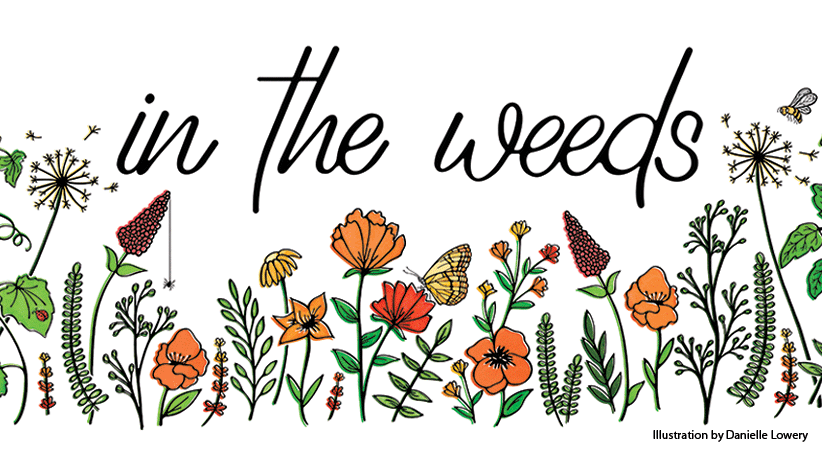Determine the best time to plant vegetables
One of the most challenging aspects of vegetable gardening is trying to figure out when to plant each type of crop. Some vegetables are cold tolerant and can be planted as soon as the soil thaws in early spring. Others are frost-sensitive and can’t be moved to the garden until the risk of frost has passed. To keep it simple, I use the last expected frost date as my guide to schedule spring planting, a trick that works no matter where you live.
Keep your last frost date in mind
Even Southern gardeners, like Joe Lamp’l, the Atlanta-based host of Growing a Greener World, uses the last frost to time planting. His is March 15. “The frost date is our recommended guideline here,” says Joe, but adds that with climate change he’s finding that date is more flexible and he has been pushing the boundaries of planting. “I usually start planting outdoors two weeks earlier than traditional recommendations and have provisional plans ready in case I need to cover my crops with a frost blanket.” (He hasn’t needed this backup plan in years.)
Protect early seedlings
Similarly, in my Nova Scotia garden with a last expected frost date of May 8, I use row covers
and frost blankets if the temperature drops below freezing unexpectedly. These lightweight covers can be tossed over newly seeded beds or just-planted seedlings. You can also turn empty milk or water jugs into protective cloches by removing the bottom and placing them over young seedlings.
You Might Also Like:
Watch Our Grown At Home Vegetable Gardening Series on YouTube
How to Start a Vegetable Garden
8 Vegetable Garden Mistakes to Avoid
Helpful Products for Starting Seeds Indoors
Make a schedule for planting vegetables
As you’re planning your spring plantings, stay organized by making a list of the vegetables you wish to grow. Jot down their approximate seeding date, for indoor or outdoor sowing, or when to transplant. I add planting information to my online calendar so reminders pop up on my phone. The chart below is based on the last expected spring frost date and tells you when you’re usually safe to start each plant outdoors. If you’re not sure of the frost date, contact your local extension office or visit the Almanac website.
Determine when to plant vegetables based on your last frost date
| Plant Name | 3 Wks Before Last Frost Date | 2 Wks Before Last Frost Date | 1 Wk Before Last Frost Date | Last Frost Date | 1 Wk After | 2 Wks After | 3 Wks After | Soil Temp °F | Spacing & Notes |
|---|---|---|---|---|---|---|---|---|---|
| Beans | X | X | X | X | 60-90 °F | 2 in. apart for bush, 3 in. for pole; Seeds | |||
| Beets | X | X | X | X | 45-80 °F | 1 in. apart, thin to 3 in. apart; Seeds | |||
| Broccoli | X | X | X | 45-85 °F | 12-18 in. apart; Seeds or Plants | ||||
| Cabbage | X | X | X | 45-85 °F | 12-24 in. apart; Seeds or Plants | ||||
| Carrots | X | X | X | 50-85 °F | 1/2 in. apart, thin to 2 in.; Seeds | ||||
| Celery | X | X | 70-75 °F | 9-12 in. apart; Plants | |||||
| Corn | X | X | 65-85 °F | 4-6 in. apart; Seeds | |||||
| Cucumbers | X | X | X | 65-90 °F | 3-6 seeds per hill, or 12-15 in. apart in rows; Seeds or Plants | ||||
| Lettuce | X | X | X | X | 45-80 °F | 1 in. apart, thin to 6-10 in. for full-sized heads; Seeds or plants | |||
| Melons | X | X | 65-95 °F | 4-6 seeds per hill, or 15-18 in. apart in rows; Seeds or plants | |||||
| Onions | X | X | X | 45-90 °F | 1/2 in. apart, thin to 2-4 in.; Seeds or plants | ||||
| Peas | X | X | X | 40-80 °F | 1-2 in. apart; Seeds | ||||
| Peppers | X | X | 70-95 °F | 12-24 in. apart; Plants | |||||
| Potatoes | X | X | X | X | 45-70 | 12 in. apart; Seed potatoes | |||
| Spinach | X | X | X | 40-70 °F | 1 in. apart, thin to 3-6 in. apart; Seeds | ||||
| Squash | X | X | X | 70-95 °F | 2-4 seeds per hill, 18-24 in. apart in rows; Seeds or Plants | ||||
| Tomatoes | X | X | 70-90 °F | 18-24 in. apart (depending on type and staking method); Plants |
You Might Also Like:
Starting Seeds with Soil Blocking
Your Handy Guide to Vegetable Harvesting
Seed Starting Tips
















